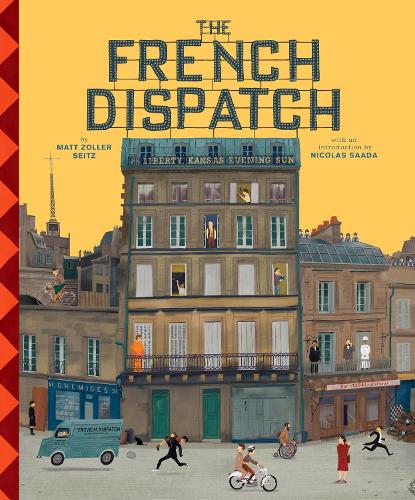

Each story is told from the perspective of a different writer for The French Dispatch, each with their own distinct voice and style. It's a film that reminds us of the importance of human connection, and the way that stories can bring us together, even in the most unlikely of circumstances.Īnderson's use of narration throughout the film is also worth noting. Anderson's unique style may not be for everyone, but for those who appreciate his idiosyncratic approach to filmmaking, "The French Dispatch" is a must-see. Whether it's the tales of a jailed artist, a student revolution, or a sumptuous meal, each story is imbued with a sense of wonder and whimsy that is both captivating and inspiring. It's a testament to Anderson's skill as a filmmaker that he is able to balance so many different elements without losing sight of the bigger picture.Īt its core, "The French Dispatch" is a celebration of the power of storytelling. Each segment is connected by the theme of storytelling, and as the film progresses, we see how the various threads come together to form a larger narrative. Perhaps the most impressive aspect of the movie, however, is the way Anderson weaves together these seemingly disparate stories into a cohesive whole. The performances are also top-notch, with each actor bringing their own unique spin to their character.

WES ANDERSON FRENCH DIS SOUNDTRACK MOVIE
From the meticulously crafted sets to the perfectly tailored costumes, every aspect of the movie is designed to create a fully realized world that is both quirky and charming. As he describes the meal, Anderson's camera lingers over each dish, highlighting the colors, textures, and flavors in a way that is both sumptuous and tantalizing.Īs with all of Anderson's films, the attention to detail in "The French Dispatch" is staggering. The story is narrated by Jeffrey Wright's character, Roebuck Wright, a food writer for The French Dispatch who is known for his poetic, flowery language. It tells the story of a chef named Nescaffier who is hired by the police commissioner to cook a meal for a group of wealthy guests.

The third and final segment, "The Private Dining Room of the Police Commissioner," is perhaps the most captivating of the three. As she details the revolution, Anderson employs his trademark visual style, using symmetry, bright colors, and meticulously crafted sets to create a surreal, dreamlike world. The story is narrated by Frances McDormand's character, Lucinda Krementz, a writer for The French Dispatch who is known for her blunt, matter-of-fact style. The second segment, "Revisions to a Manifesto," is a bit more lighthearted, as it follows a student revolution led by a trio of young activists, played by Timothée Chalamet, Léa Seydoux, and Lyna Khoudri. As she explains Rosenthaler's story, Anderson's camera lingers over the various details of the prison, from the crumbling walls to the peeling paint, all brought to life with an impeccable eye for detail. Berensen, a writer for The French Dispatch who is known for her dry wit and deadpan delivery. The story is narrated by Tilda Swinton's character, J.K.L. The first segment, titled "The Concrete Masterpiece," follows a jailed artist named Moses Rosenthaler, played by Benicio Del Toro, as he creates a mural inside the prison. The movie is divided into three distinct parts, each representing a different story from the paper. The publication is overseen by its eccentric editor-in-chief, Arthur Howitzer Jr., played brilliantly by Bill Murray. The film is set in the fictional French town of Ennui-sur-Blasé, where a small team of journalists work for an American newspaper, The French Dispatch. As the opening credits roll for Wes Anderson's latest film, "The French Dispatch," viewers are greeted with a flurry of intricately detailed sets, charmingly quirky characters, and a whimsical sense of humor that can only be attributed to the mind of this celebrated auteur.


 0 kommentar(er)
0 kommentar(er)
